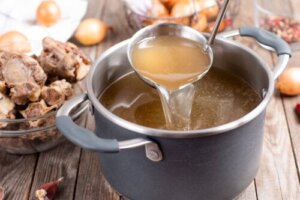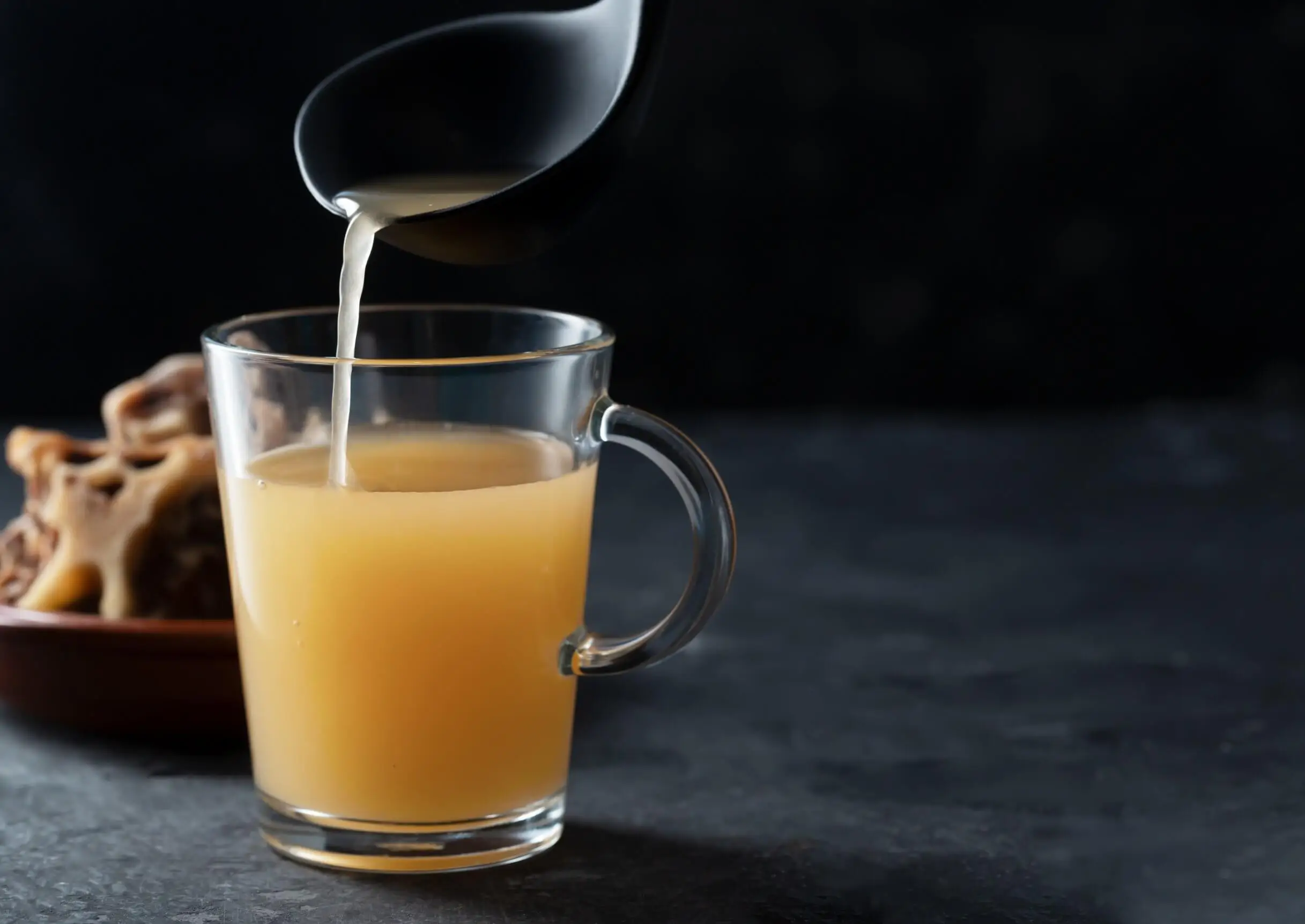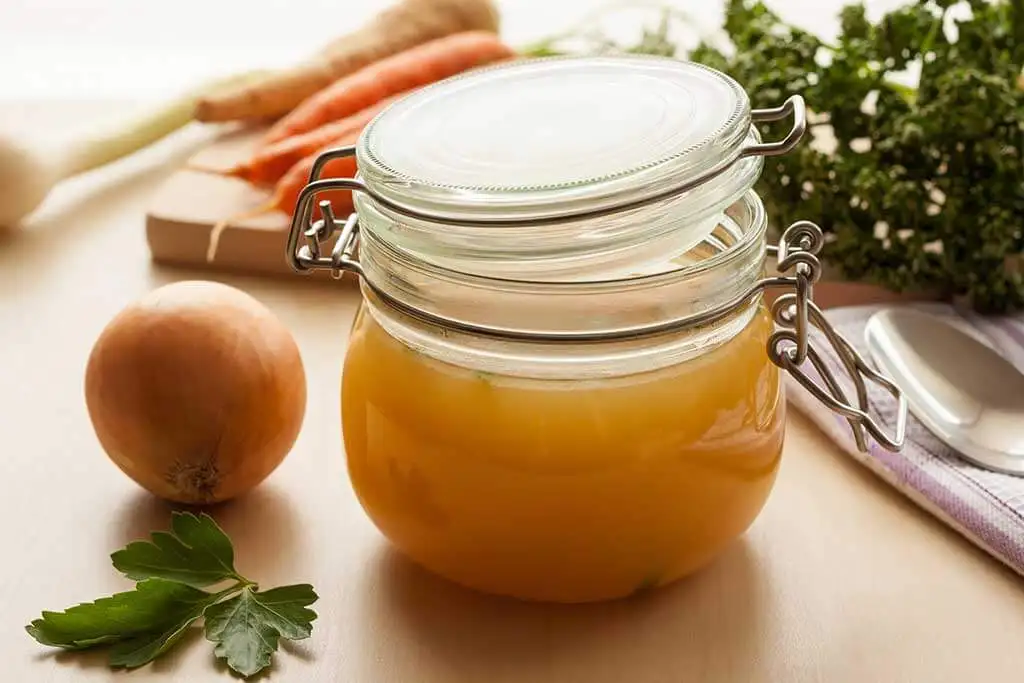Bone Broth Recipe and its Health Benefits


Written and verified by the nutritionist Saúl Sánchez Arias
Bone broth is one of the most trending recipes at the moment and it can provide many health benefits. It can be consumed alone or used to prepare other more complex dishes.
We’re going to show you a simple recipe so that you can get the most out of it and avoid commercial versions, which are not always high quality.
How to prepare bone broth?

To obtain the best flavor and a higher concentration of nutrients, it’s advisable to use different varieties of bones. It is best to combine marrow with oxtail, knuckles, and feet. It’s also possible to use some spices or aromatic herbs.
In this case, the broth would be able to provide high-quality antioxidants, which are decisive elements for maintaining a good state of health. Take note and prepare this broth at home.
Read more: Three Easy Recipes for Garlic Soup
Benefits of bone broth
To begin with, it should be noted that bone broth is an excellent source of collagen. This protein is the most abundant one in the human body and is part of almost all tissues. It’s responsible, among other things, for providing elasticity and contractility to the muscle. It’s essential especially when a sports injury occurs in order to speed up recovery. A study published in the journal Amino Acids confirms this.
Bone broth also contains a high amount of vitamins and minerals. Calcium, magnesium, potassium and phosphorus stand out. Among all of them, we’ll mention the action of magnesium. This element is key to consolidate a good night’s rest. It has been shown to improve the quality of sleep and even to exert synergistic effects with other elements such as melatonin.
But that isn’t all. Bone broth concentrates proteins of high biological value. These nutrients are essential in order to prevent problems related to lean mass, such as sarcopenia. An intake of at least 0.8 grams per kilogram of weight is needed in sedentary people.
In athletes, the needs can be increased up to 2 grams per kilogram of weight. This is evidenced by research published in the Journal of the International Society of Sports Nutrition.

You may also be interested in: What Is Pho Soup and What Are Its Benefits?
Bone broth with fish bones
It’s also possible to incorporate fish bones into bone broth. These don’t only provide collagen and protein, but are also a good source of calcium and iodine. This mineral is essential to ensure the proper functioning of the thyroid gland, an organ that modulates energy expenditure and can suffer alterations due to a defect or excess in the production of hormones.
When this happens, people experience a variety of symptoms that can compromise their state of health and mood. For this reason, it’s essential to cover the requirements of essential micronutrients to prevent pathologies that may be caused by a poor diet.
Bone broth, a high-quality product that’s good for your health
As you have seen, bone broth is a high-quality product that’s good for your health. However, it’s always advisable to prepare it at home. This avoids the use of many artificial additives such as preservatives, which could damage its quality.
It’s important to always use different bones and to ensure a slow cooking process to extract as many nutrients as possible.
All cited sources were thoroughly reviewed by our team to ensure their quality, reliability, currency, and validity. The bibliography of this article was considered reliable and of academic or scientific accuracy.
- Food Safety (19 de setiembre de 2023). Tabla de conservación de alimentos fríos. Departamento de Salud y Servicios Humanos de Estado Unidos. Consultado el 30 de julio del 2024. https://espanol.foodsafety.gov/tablas-de-seguridad-alimentaria-mfu8/Tabla-de-conservaci%C3%B3n-de-alimentos-fr%C3%ADos
- García, P., Morales, P., Cámara, M., Fernández, V., Tardío, J., & Cortés, M. (2020). Nutritional and phytochemical composition of Mediterranean wild vegetables after culinary treatment. Foods, 9(12): 1761. https://www.ncbi.nlm.nih.gov/pmc/articles/PMC7760095/
- Harvard T. H. Chan. (2021). The nutrition source. Collagen. Harvard School of Public Health. Consultado el 30 de julio del 2024. https://www.hsph.harvard.edu/nutritionsource/collagen/
- Hsu, D., Lee, C., Tsai, W., & Chien, Y. (2017). Essential and toxic metals in animal bone broths. Food & Nutrition Research, 61(1). https://www.ncbi.nlm.nih.gov/pmc/articles/PMC5533136/
- Inczefi, O., Bacsur, P., Resál, T., Keresztes, C., & Molnár, T. (2022). The influence of nutrition on intestinal permeability and the microbiome in health and disease. Frontiers in Nutrition, 9, 718710. https://www.ncbi.nlm.nih.gov/pmc/articles/PMC9082752/
- Medline Plus. (20 de octubre de 2022). Enfermedad y consomé de pollo. Biblioteca Nacional de Medicina de Estados Unidos. Consultado el 30 de julio del 2024. https://medlineplus.gov/ency/article/002067.htm
This text is provided for informational purposes only and does not replace consultation with a professional. If in doubt, consult your specialist.








